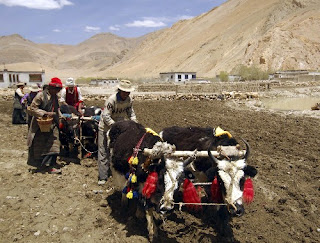The capital of Tibet. “Lhasa” means the land of Gods in Tibetan, so we can image it’s the center of Buddhism. In fact, 100 percent of Tibetans are Buddhists.
As the center of religion in Tibet have many religious buildings. Some of them are Jorkhang Temple, Ramqe Temple, Norbu Lingka, Gedan Monastery, Sera Monastery, Drepung Monastery and Potala Palace, etc.
One thousand of visitors have one thousand ideas about Lhasa, The details of local culture are so rich and colorful, and somewhat mysterious that ones imagination runs wild. As a visitor, you must realize you are standing on “the ridge of the world”, and close to the holy land, because it is so near to the sky.
Around the foot of Potala Palace, there are thousands of houses built in the local style, at the top of every house, there’re always flapping some small burgees(“Jingfan” ), the colors of them are blue, white, red, green and yellow, the colors are in vertical stripes. blue means sky、white means clouds、red means fire、green stands for rivers and yellow, the earth.
In the Tibetan mind, everything has a spirit; from a mountain to a rock, Buddha exists everywhere. So, in Lhasa and other areas of Tibet, you will notice that a lot of natural objects, like rocks, trees are marked with special signs, and the Tibetan people walk around them from right to left when they pass.
















